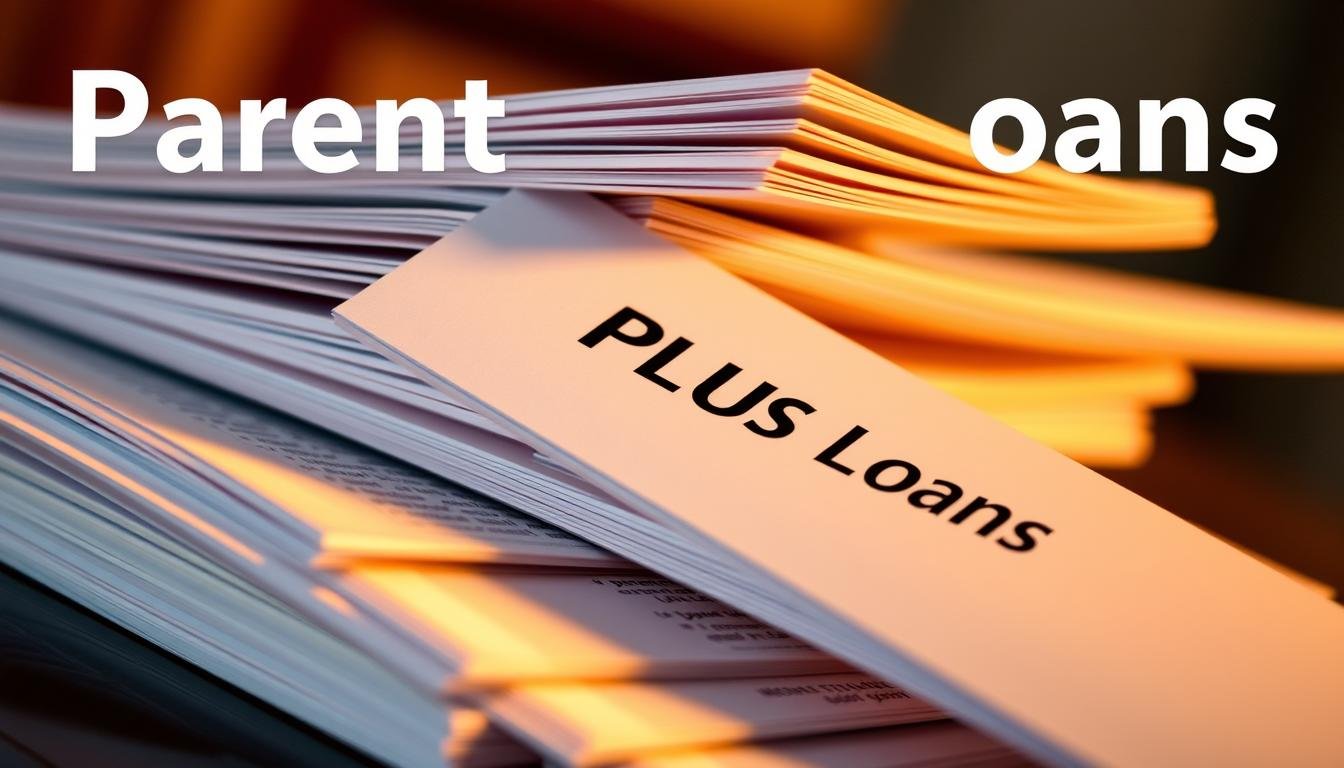Getting approved for an auto loan can be tough without an established credit score. Many lenders hesitate to approve applications from first-time borrowers. However, several financing solutions exist for those in this situation.
Options like larger down payments or adding a co-signer improve approval chances. Specialized lenders often work with new borrowers, though interest rates may be higher. Comparing multiple offers helps secure better terms.
Building a payment history first can make future approvals easier. Avoiding high-risk dealerships prevents unfavorable agreements. Smart planning turns temporary challenges into long-term financial success.
Key Takeaways
- Multiple financing paths exist for borrowers without credit history
- Higher rates often apply but can be managed strategically
- Comparison shopping reveals the most favorable terms
- Credit-building measures create future opportunities
- Specialized lenders offer solutions tailored to new borrowers
Understanding No Credit Car Loans
Lenders assess risk differently when applicants lack borrowing records. A credit history gap means limited data for evaluating repayment reliability. Specialized programs exist to help these borrowers secure auto loans.
What Does “No Credit” Mean for Lenders?
A “thin file” status applies to those with 0-6 months of financial activity. Without scores, lenders may review rent or utility payments. First-time borrowers often face higher interest rates due to perceived risk.
How No Credit Differs from Bad Credit
Bad credit reflects past defaults, while no credit indicates inexperience. FICO scores below 580 signal financial missteps. Applicants without scores may qualify for better loan terms than those with poor histories.
| Credit Type | FICO Range | Average APR | Repossession Rate |
|---|---|---|---|
| No Credit | N/A | 14.46% | 5.1% |
| Bad Credit | 300-579 | 21.81% | 8.9% |
Credit unions like DCU offer 0.5% APR discounts for automated payments. Programs such as Credit Karma’s Credit Builder accelerate score growth. Comparing multiple offers ensures favorable conditions.
Top Lenders Offering No Credit Car Loans
Several financial institutions specialize in helping first-time borrowers secure vehicle financing. These lenders evaluate alternative factors like income stability and down payments. Comparing options ensures access to the best loan offers.
myAutoloan: Competitive Rates for New Borrowers
myAutoloan provides starting APRs as low as 7.24% for borrowers with limited history. Their rate reduction program cuts 0.5% quarterly for on-time payments. Applicants must meet an $8,000 minimum loan amount.
Chase: Flexible Terms for First-Time Buyers
Chase offers 84-month terms with APRs from 7.09%, ideal for budget-conscious buyers. Existing customers qualify for relationship discounts. The $4,000 minimum makes it accessible for affordable vehicles.
Auto Credit Express: Specialized No-Credit Solutions
This platform connects applicants with a 50-state dealer network. Direct partnerships streamline approvals for thin-file borrowers. Their online tools simplify comparing multiple auto loan options.
- Prestige Financial approves applicants with past bankruptcies
- Capital One’s Auto Navigator compares dealer inventories
- Digital FCU finances up to 130% of a vehicle’s value
Credit unions often provide lower interest rates than traditional banks. Pre-qualification tools help estimate payments without hard credit checks. Always review terms before signing agreements.
How to Get a Car Loan with No Credit History
Securing vehicle financing without prior borrowing experience requires strategic preparation. Lenders often rely on alternative criteria like income stability or rental payment history. Following these steps improves approval odds and ensures favorable loan terms.
Check Your Credit Report for Errors
Even with limited history, reviewing reports from AnnualCreditReport.com is essential. Errors like incorrect personal details or phantom accounts can hinder approvals. Disputing inaccuracies through official channels ensures a fair evaluation.
- Step 1: Request free reports from all three bureaus
- Step 2: Highlight discrepancies in payment records
- Step 3: Submit disputes with supporting documents
Compare Multiple Loan Offers Online
Platforms like LendingTree allow side-by-side comparisons of auto loans. Soft inquiries don’t affect credit score, making it safe to explore options. Key factors to evaluate:
| Lender Type | Avg. APR Range | Prequalification |
|---|---|---|
| Credit Unions | 6.5%–12% | Yes (30-day window) |
| Online Lenders | 8%–15% | Instant estimates |
| Dealerships | 9%–18% | Varies by franchise |
Consider Prequalification to Gauge Rates
Prequalification tools predict approval odds without hard credit checks. Applicants receive realistic interest rate estimates based on income and employment. This prevents surprises during formal applications.
Case Study: A $15,000 loan prequalified at 9% APR versus 14% without prequalification. Documentation like pay stubs and utility bills strengthens applications. Always negotiate terms using preapproval offers as leverage.
“Prequalification demystifies the borrowing process for first-time applicants.”
LendingTree Spring Report
The Role of Down Payments in No-Credit Loans
A substantial down payment transforms financing possibilities for new borrowers. It reduces the *loan amount*, lowering both *monthly payments* and lender risk. This upfront investment often compensates for limited *credit history*.
Why a Larger Down Payment Helps
Lenders perceive higher down payments as reduced risk. A 20% benchmark on a $20,000 vehicle cuts the financed sum to $16,000. This equity position often secures better *interest rates*.
DCU’s *auto loan* program requires 80% loan-to-value (LTV), incentivizing larger deposits. Case studies show $5,000 down on a 60-month term saves $1,200 versus $0 down. Repossession risks drop by 40% with 20% equity.
Calculating the Ideal Down Payment
Use this formula: Target Down Payment = Vehicle Price × 20%. For a $25,000 car, aim for $5,000 upfront. Credit unions like PenFed offer 0.25% APR discounts for every 5% additional down payment.
- Power Buyer Programs: Dealers like CarMax reward 25%+ down with waived fees.
- Insurance Benefits: Higher equity reduces gap insurance costs.
- Savings Timeline: Save $500/month for 10 months to reach a 20% goal.
“Down payments above 20% correlate with 32% fewer defaults.”
Federal Reserve Auto Finance Report
Using a Co-Signer to Secure Better Terms
Adding a trusted co-signer can open doors to better financing options for first-time borrowers. This strategy helps lenders mitigate risk, often leading to improved loan terms and approval chances. A co-signer with a solid financial history vouches for repayment reliability.
How Co-Signers Improve Approval Odds
A co-signer with a credit score of 620+ can reduce APRs by up to 35%. Their stable income and payment history reassure financiers. This often translates to lower interest rates and flexible repayment plans.
- Legal liability: Co-signers are equally responsible for missed payments.
- State laws: Wisconsin requires spousal consent for marital co-signers.
- Lender policies: Some release co-signers after 12–24 on-time payments.
Responsibilities and Risks for Co-Signers
Co-signers must understand their obligations. Defaults appear on both parties’ credit reports, potentially damaging relationships. Experian data shows a 22% default rate for co-signed agreements.
“A co-signer’s credit health is tied to the borrower’s actions—choose wisely.”
Experian Auto Finance Report
Case Study: A 22-year-old secured a 7% APR with a parent’s co-signature, versus 14% alone. Always draft a written agreement outlining payment roles and exit clauses.
Building Credit Before Applying for a Loan
Six months of focused effort can create a viable credit profile. Lenders look for consistent patterns when evaluating first-time borrowers. Strategic actions help demonstrate financial responsibility without extensive credit history.

Quick Ways to Establish Credit in 6 Months
A 180-day plan can lay the foundation for better auto loan approvals. Start by becoming an authorized user on a family member’s account. This instantly adds positive payment history to your file.
- Month 1-2: Open a secured card with $200-500 deposit
- Month 3-4: Add a credit builder loan from local unions
- Month 5-6: Use Experian Boost to report utility payments
Keep balances below 30% of limits across all accounts. Payment history accounts for 35% of FICO scores according to this breakdown:
| Factor | Weight |
|---|---|
| Payment History | 35% |
| Amounts Owed | 30% |
| Credit History Length | 15% |
Using Credit Cards to Boost Your Score
Secured cards from Discover or Capital One offer the safest path. These require refundable deposits but report to all three bureaus. Student cards often have higher approval rates for young applicants.
Case Study: A borrower increased their credit score from 580 to 650 in six months. They used a secured card with $300 limit and made weekly micropayments. This strategy kept utilization below 10% consistently.
“Micro-payments throughout the month can artificially lower reported utilization.”
CreditCards.com 2023 Guide
Avoid applying for multiple accounts simultaneously. Each hard inquiry can temporarily drop scores by 5-10 points. Space applications by at least 90 days for optimal results.
Dealership Financing vs. Direct Lenders
Borrowers face two primary paths when securing vehicle funding: dealerships or direct lenders. Each option carries distinct advantages and potential drawbacks. Understanding these differences helps secure favorable terms.
Pros and Cons of Dealership Loans
Showroom financing provides convenience but often includes hidden costs. Dealers typically markup interest rates by 1-2% as compensation. These “buyer assistance” programs may offer:
- Instant approval during vehicle selection
- Manufacturer-subsidized rates on new models
- Bundled GAP insurance at inflated prices
Case Study: A $25,000 auto loan at 7% APR through a dealer versus 5.75% at a local credit union. The 1.25% difference costs $1,560 extra over 60 months.
| Factor | Dealership | Direct Lender |
|---|---|---|
| Avg. APR Markup | +1.5% | 0% |
| Approval Speed | 15 minutes | 1-2 business days |
| Prepayment Penalties | 28% have them | 6% have them |
When to Choose a Bank or Credit Union
Direct lenders excel when borrowers prioritize long-term savings. Credit unions like DCU offer 0.25% EV discounts and lower fees. Their loan offers typically feature:
- No hidden acquisition fees
- Co-signer release options
- Rate discounts for automatic payments
“Membership-based lenders approve 43% more thin-file applicants than national banks.”
National Credit Union Administration
Military personnel qualify for Navy Federal’s 1.79% APR specials. Always compare multiple options before committing to any financing agreement.
Avoiding Buy-Here, Pay-Here Pitfalls
Buy-here, pay-here dealerships present unique challenges for vehicle shoppers. These in-house financing options often come with higher interest rates and restrictive conditions. Understanding the risks helps borrowers make informed decisions.
High Interest Rates and Hidden Fees
The average 19.8% APR at these dealerships significantly exceeds traditional auto loan rates. Many contracts include:
- GPS starter interrupt devices that disable vehicles remotely
- “Yo-yo financing” scams where approvals get revoked post-purchase
- Mandatory full-coverage insurance through partner providers
State usury laws vary, with some allowing rates above 25%. Payment tracking technologies create constant surveillance. A $10,000 vehicle often costs $18,000 after interest.
Why Repossession Risks Are Higher
With 15% repossession rates (versus 5% industry average), these deals favor dealers. Common triggers include:
| Issue | Traditional Lender | BHPH Dealer |
|---|---|---|
| Late Payment Grace Period | 10-15 days | 24-48 hours |
| Missed Payment Tolerance | 2-3 months | 2-3 weeks |
“BHPH borrowers default at triple the rate of credit union members.”
Consumer Financial Protection Bureau
Alternative subprime lenders like Auto Credit Express report payments to bureaus, helping build credit score. Always review contracts for:
- Accurate vehicle valuation
- Prepayment penalty clauses
- Warranty coverage details
- Interest rate calculation method
Understanding total cost of ownership prevents financial strain. Comparing loan terms across multiple options ensures fair agreements.
Calculating Affordability: Price vs. Payment
Monthly costs often surprise buyers who focus solely on sticker prices. A $25,000 vehicle could cost $400/month for 72 months or $550/month for 48 months. Understanding this difference prevents budget strain over time.
Using Loan Calculators to Budget
The 20/4/10 rule provides a smart framework: 20% down, 4-year term, and payments ≤10% of income. For a $30,000 vehicle, this means:
- $6,000 down payment
- $24,000 loan amount
- Maximum $500 monthly payment on $60k salary
“Every $5,000 borrowed typically adds $100 to monthly payments at average interest rates.”
Consumer Financial Protection Bureau
Balancing Loan Terms and Total Cost
Longer terms reduce payments but increase overall expenses. Compare these scenarios for a $20,000 loan at 7% APR:
| Term Length | Monthly Payment | Total Interest |
|---|---|---|
| 48 months | $479 | $2,992 |
| 72 months | $341 | $4,552 |
Maintenance costs add another layer. Extended warranties often cost $1,200-$3,000. Emergency funds should cover 3-6 months of payments. Insurance premiums vary by:
- Vehicle type (sedans vs. SUVs)
- Driver history
- Coverage levels
Case Study: A borrower choosing $300/month payments over $450 saved $90/month but paid $2,560 more in interest. Using an online calculator revealed this trade-off instantly.
Negotiating Your Loan Terms
Smart negotiation tactics can significantly reduce financing costs for vehicle purchases. Borrowers often overlook flexible points in loan agreements that lenders can adjust. With proper preparation, buyers secure better conditions than initial offers.

Tips to Lower Interest Rates
Lenders frequently offer 0.25%-0.5% discounts for automatic payments. Many institutions provide lower interest rate guarantees if competitors beat their offers. These strategies help reduce costs:
- Relationship discounts: Existing customers often qualify for 0.5% APR reductions
- Credit improvements: A 50-point credit score increase may justify renegotiation
- Refinancing: After 12-18 months, better terms become available
Case Study: A borrower saved $1,844 by refinancing from 9% to 5.8% APR after improving their score. Always review contracts for rate adjustment clauses.
How to Shorten Loan Terms Responsibly
Converting a 60-month agreement to 48 months saves interest but increases payments. Use these approaches:
| Strategy | Impact | Considerations |
|---|---|---|
| Biweekly payments | Cuts 4 years to 3.5 | Check for processing fees |
| Lump-sum principal payments | Reduces total interest | 11% of lenders charge penalties |
“Early payoff calculators show exact savings—a $20,000 loan at 7% APR saves $2,560 when shortened by 24 months.”
CFPB Payment Calculator
Warning: Some contracts include collateral substitution restrictions. Always verify these clauses before signing. If issues arise, the CFPB complaint portal resolves 89% of cases within 60 days.
Conclusion
Securing an auto loan without established history requires strategy, not luck. By comparing multiple offers, borrowers find better interest rates and terms. Building a payment record opens doors to future opportunities.
Key takeaways include:
- Larger down payments reduce lender risk and monthly costs
- Co-signers help secure approval with improved conditions
- Specialized lenders offer solutions for new borrowers
Tools like LendingTree simplify rate comparisons without affecting scores. Refinancing becomes an option after consistent payments. Financial counseling resources provide guidance for long-term success.
With patience and research, first-time buyers achieve both transportation needs and credit growth. Every payment moves borrowers closer to stronger financial standing.






